A Bicentenary of Art, The National Gallery, London at 200
In May 2024, the National Gallery in London marked its two hundredth anniversary with a year-long event. Established in 1824 with just 38 paintings, it has grown internationally as an art gallery. Featuring more than 2,300 pieces of artwork by famous names such as Leonardo da Vinci, Van Gogh, Rembrandt and Monet across almost a millennium of art history, this gallery is home to far more artistic masterpieces that the average person could view over a lifetime. A cultural behemoth and a forum for political debate and outrage over its 200 year history, the National Gallery in London is considered.
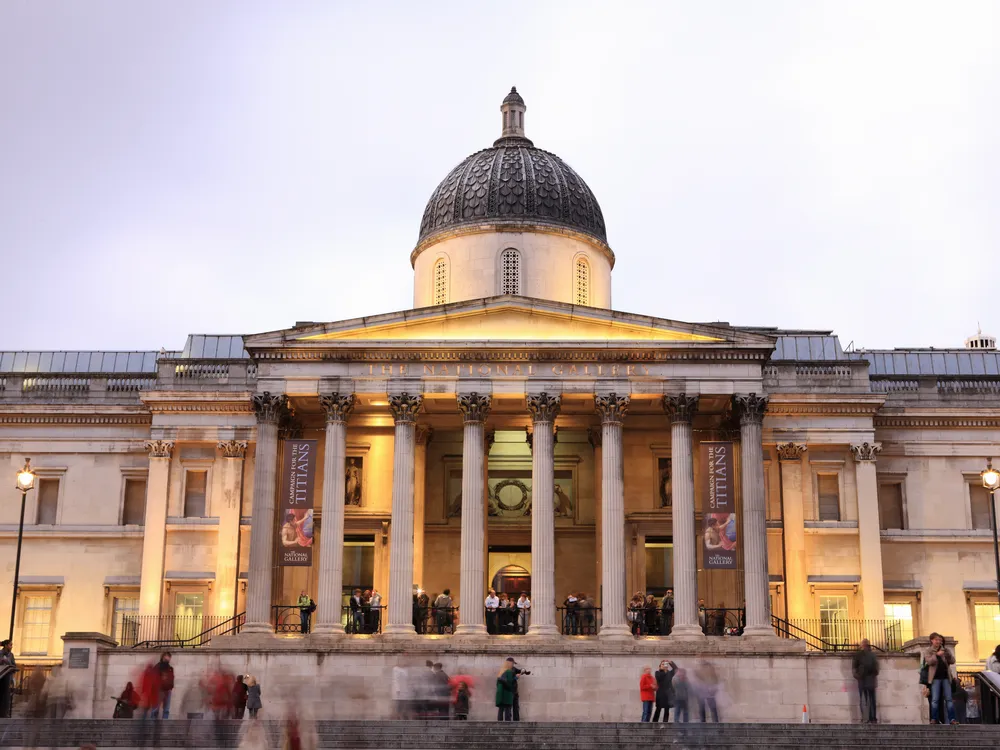
With a £95 million budget behind it, as part of the NG200 project to mark the bicentennial celebration. This will feature national programming and events in the UK like pop-up exhibitions as well as major improvements to the gallery itself. These include the refurbishment of the Sainsbury Wing and a new cutting-edge research center dedicated to ancient painting. The NG200 celebrations will also be a community event which includes the ‘Art Road Trip’: mobile art studios that have been driven around 200 communities nationwide, making sure the power of art spreads across the whole nation.
During this colorful history, however, there have been pivotal moments that not only led to a significant evolution for the museum but also were pop-culture occurrences of the time sort. On 10th–12th May 2024, a history of the museum specially commissioned for this purpose was projected on to its front page. Curators, art lovers and comedian Michael Palin lend their voices to the series. Getting into some of the key pop cultural events that took place around the museum; In 1914 suffragist Mary Richardson entered into the National Gallery and slashed Diego Velázquez’s painting, “The Toilet of Venus,” to protest her fellow activist being arrested.
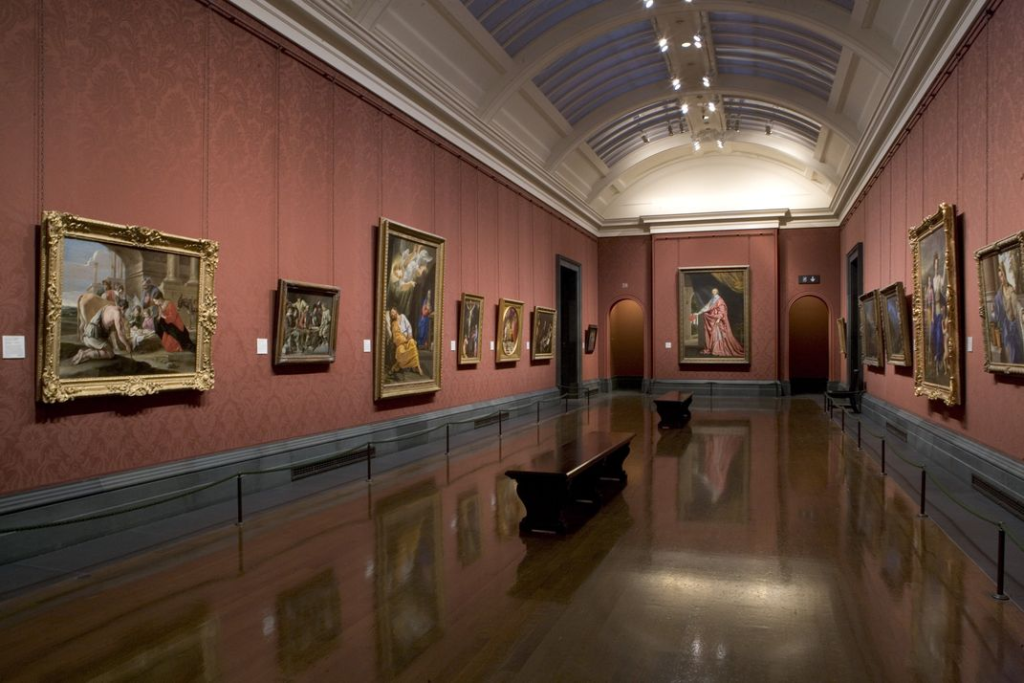
Founding Days
The National Gallery was born of the new construct of nationhood that began to be brandied about Europe in the first decades of the nineteenth century, Caiger-Smith said. The nationalism had grown within the United Kingdom as industrialisation and urbanisation advanced. Its educational aspirations were “top-down” philanthropy intended to better inform the public about great art and at the same time help to redress increasingly imbalanced economic interests.
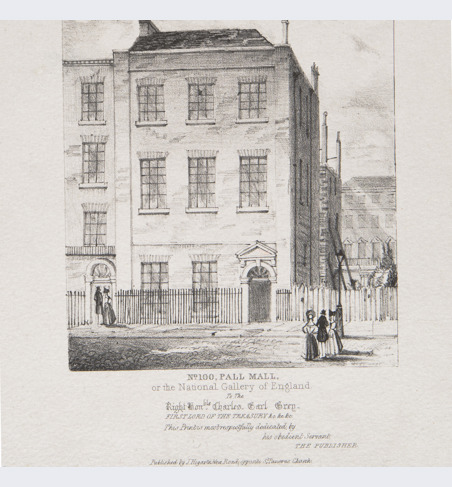
Shift to Trafalgar’s Square
Angerstein also had a smaller town home than the enormous national museums such as the Louvre, so Parliament paid for a new structure in Gallitzin grey stone on Trafalgar Square. Neoclassical architecture of 1838 at Trafalgar Square At the intersection of the wealthy West End and poor East End, its location emphasized that it was open to everyone. Its location and what it stands for have made it an extremely visible gallery. The iconography, particularly Trafalgar Square — which is used in Pride and demonstrations but has not previously applied to the gallery. Its very location at the heart of this well-known site, serves to remind that ‘it belongs to us — it’s a People’s Palace in every sense’.
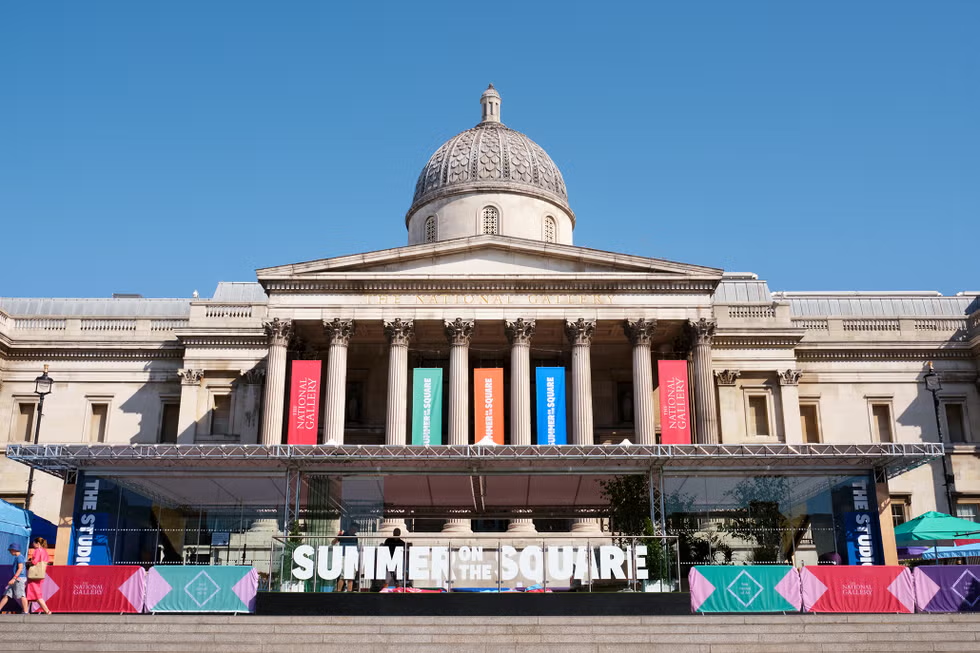
Happenings around Art and the Collection of the Gallery
The paintings were moved away from London and hidden across homes to avoid the Blitz. The gallery ultimately found a home in the basement of a slate mine in Wales, somewhere safe. Given the ideal conditions, the pieces remained there, from 1941 to 1945. Even as many of its items had been rehoused due to the evacuations, the National Gallery continued to provide for the nation through its Picture of Month and lunchtime concerts. The gallery also showcased modern war painters exhibitions An annual visitation topped six million before the pandemic, dropped to two million in 2022 and then surged back up to three million in 2023. It is also true that what the National Gallery has come to own and how it organises objects have changed over time. With the Tate Modern: newly built, old art » In 1996 they decided that it would concentrate on works made before 1900 and all modern and contemporary pieces would go to Tate
The Collection of The Gallery
We do now know that the first collection came from the collector John Julius Angerstein. In addition to Dutch, Flemish and English paintings, the collection included Italian works such as The Raising of Lazarus by Sebastiano del Piombo. From 1823 until 1838 Sir George Beaumont’s private collection of over 300 paintings including works by Van Dyck, Reynolds, Claude and Rubens was housed in Pall Mall as the British Institution showed it alongside Angerstein’s pictures.
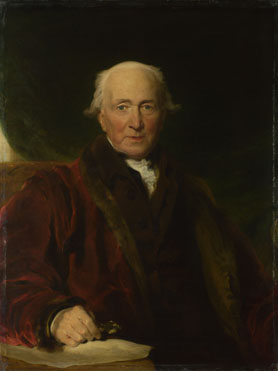
In the early years, the National Gallery bought pictures under an ad hoc policy by a selection of the Trustees as to what they thought was suitable. This earned the gallery criticism in the 1850s, especially for its failure to acquire any works of early Italian art. In reality, however, Eastlake was Director following administrative reforms in 1855. He travelled extensively through Europe, tactically buying works to build the prestige of the gallery. The gallery was also home to Italian masterpieces of the highest quality—Botticelli’s Adoration of the Kings and Uccello’s The Battle of San Romano were acquired during Eastlake’s ten-year tenure, underlining its pre-eminence in that field.
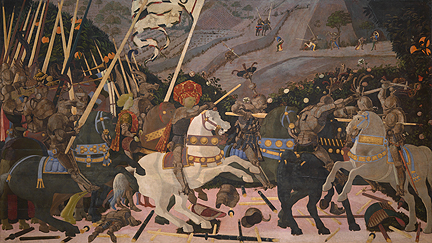
Over this period, over 1,000 Turner works were finally gifted to the National Gallery. Due to lack of space, these were displayed at South Kensington alongside the Vernon collection. A new gallery devoted to British art was established with a donation of money and pictures from Henry Tate in 1889. Following negotiation, the Tate Gallery opened in 1897 with most of the British pieces from the National Gallery. Managed by the National Gallery when it was opened in 1897, the Tate became autonomous ten years later.
Protesters, Vandalism, and Other Acts
Activists protesting a variety of concerns have often turned their attention to the National Gallery’s collection. Kempton Bunton stole a Francisco Goya portrait in 1961 as a protest against television licensing fees. Following this, the Gallery employed a guard dog named Rex to patrol the galleries. The guard dog patrol continued until 1971 when it was deemed no longer necessary. While Casper Netscher’s little dog might not have been suitable for patrol duty, it is one of the charming dogs featured in the gallery’s collection.
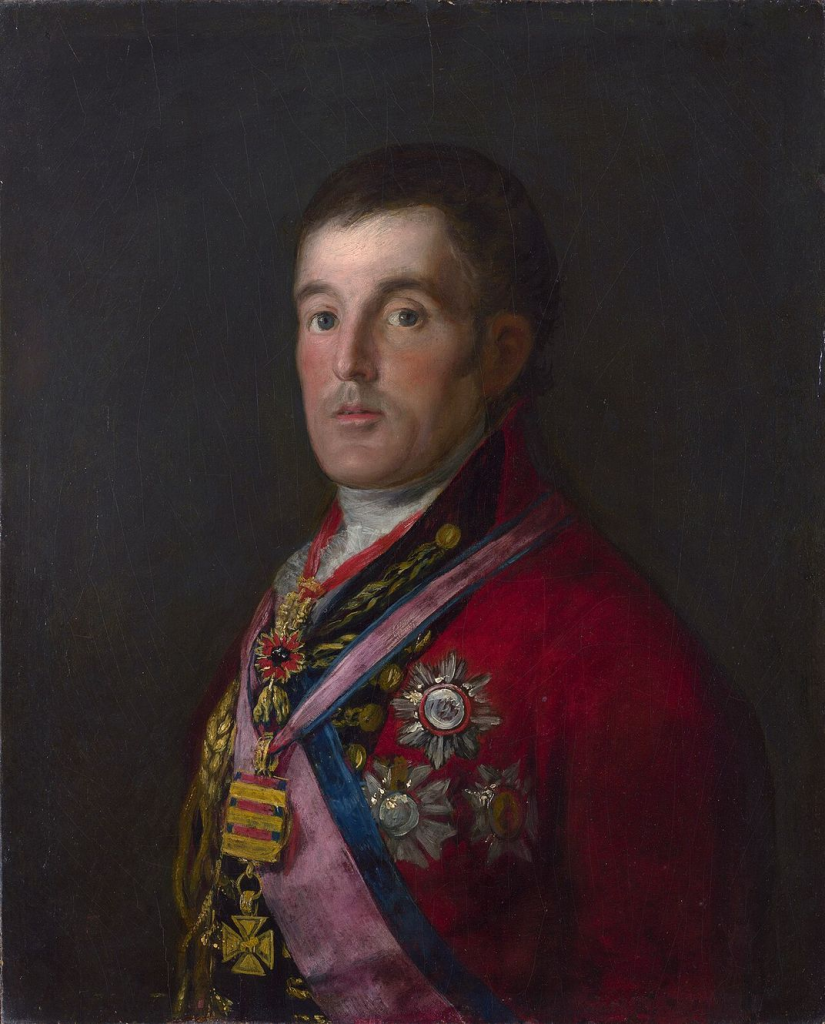
Robert Cambridge fired at a Leonardo da Vinci painting in 1987 to express his dissatisfaction with British conditions. In 2022, Just Stop Oil activists set their sights on Van Gogh’s Sunflowers, and then in 2023 it was the turn of Constable’s The Hay Wain. With its national and international profile, the gallery has been a high-profile target. Aside from these better-known cases, there have been instances of army barracks at the site throughout history—for example a In 1900 there were army barracks at the back of the National Gallery. It was used for a short period of time by soldiers in Brú; the Office of Works finally even proposed to continue playing football there, they suggested netting the gallery windows.
The gallery had also caught the attention of vandals further afield. A visitor threw a rock at a Claude Monet painting, causing slight damage in 2018. A man drew on in a J.M.W. Turner painting using the pen of his own back in 2019. This highlights the challenge of how museums must strike a balance between delivering a great museum experience for visitors and conserving their collection.
These same principles motivate us today,” the director told Smithsonian Magazine, discussing how much had changed in the gallery and its outreach over the past two centuries. To celebrate this mile-stone, the gallery has a lot of news coming down the pipeline with various special events taking place through out 365 days of this year. Through its collaboration at the venue, the gallery will have contemporary performance art by Jeremy Deller; provide increased online access to its collections; create courses for schools, youth and communities; and curate an exhibition on Van Gogh and Sienese paintings. These initiatives will culminate in 2025 with a complete rehang of the AGO’s collection.
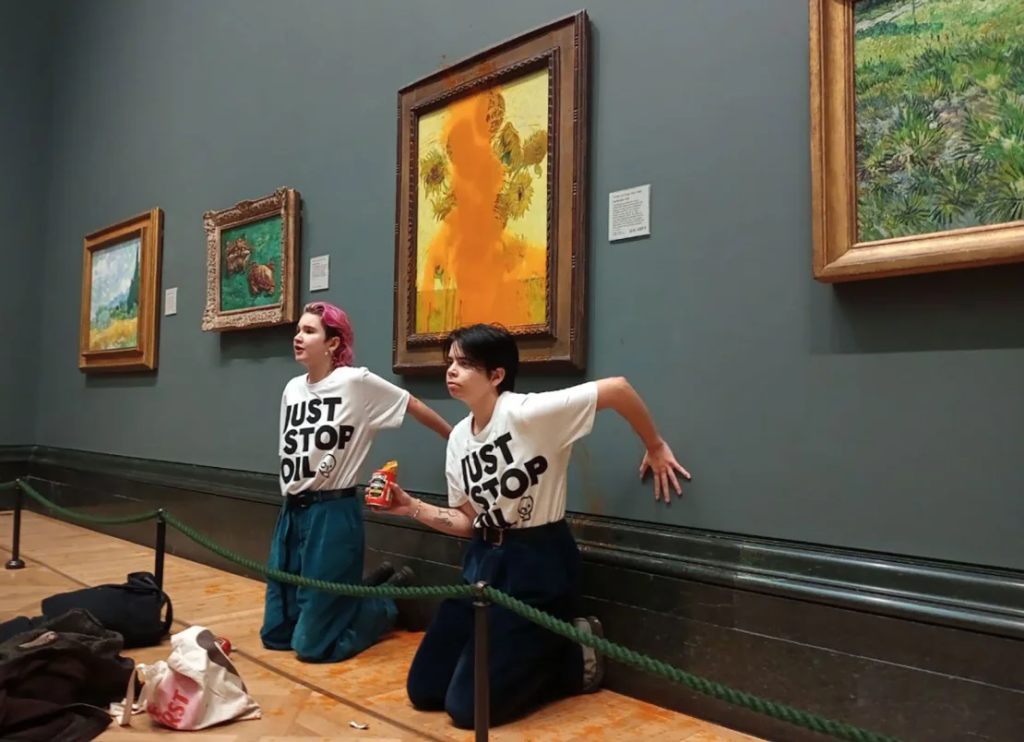
Courtesy: Just Stop Oil/editioncnn.com
And she has some further words: “We are excited to be exploring new ways to bring the experience of looking at and interpreting great paintings ever more widely, online, but also in lively exchange with contemporary artists. interview with Smithsonian Magazine.
References
https://www.nationalgallery.org.uk/about-us/history/collection-history
https://www.nationalgallery.org.uk/stories/did-you-know
https://www.elledecor.com/it/best-of/a60879278/200-years-of-art-and-culture-national-gallery-london





